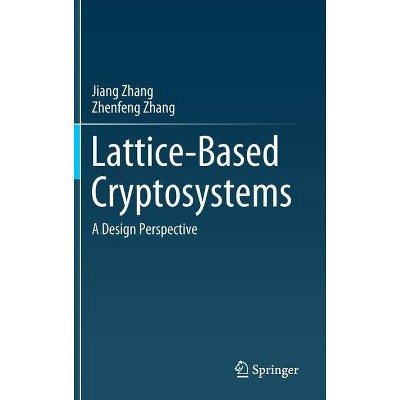Lattice-Based Cryptosystems - by Jiang Zhang & Zhenfeng Zhang (Hardcover)

Similar Products
Products of same category from the store
AllProduct info
<p/><br></br><p><b> Book Synopsis </b></p></br></br><p>1 Introduction</p> <p> 1.1 Cryptography based on number theory problems </p> <p> 1.2 Post-quantum cryptography</p> <p> 1.3 Lattice-based cryptosystems</p> <p>2. Lattices</p> <p> 2.1 Definition </p> <p> 2.2 Discrete Gaussian</p> <p> 2.3 Small Integer Solutions</p> <p> 2.4 Learning with Errors</p> <p> 2.5 Trapdoor Generation</p> <p>3. Public-key encryption</p> <p> 3.1 Definition</p> <p> 3.2 PKE against CPA attacks</p> <p> 3.2 Achieving CCA-Security in the random oracle model</p> <p> 3.3 CCA-secure PKE in the standard model</p> <p>4. Identity-based encryption </p> <p> 4.1 Definition</p> <p> 4.2 The GPV IBE scheme</p> <p> 4.3 Short IBE in the standard model</p> <p>5. Attribute-based encryption</p> <p> 5.1 Definition</p> <p> 5.2 ABE supporting and-gate policy</p> <p> 5.3 ABE supporting flexible threshold policy </p> <p> 5.4 Functional encryption </p> <p>6. Key Exchanges</p> <p> 6.1 Definition</p> <p> 6.2 Key exchange against passive attacks </p> <p> 6.3 Implicit authenticated key exchange</p> <p> 6.4 Password-based authenticate key exchange</p> <p>7. Digital signatures</p> <p> 7.1 Definition</p> <p> 7.2 Signatures in the random oracle model</p> <p> 7.3 Short signatures with tight security</p> <p> 7.4 Group signatures</p><p/><br></br><p><b> From the Back Cover </b></p></br></br><p>This book focuses on lattice-based cryptosystems, widely considered to be one of the most promising post-quantum cryptosystems and provides fundamental insights into how to construct provably secure cryptosystems from hard lattice problems. The concept of provable security is used to inform the choice of lattice tool for designing cryptosystems, including public-key encryption, identity-based encryption, attribute-based encryption, key change and digital signatures. Given its depth of coverage, the book especially appeals to graduate students and young researchers who plan to enter this research area.</p><p/><br></br><p><b> About the Author </b></p></br></br><p></p><p><b>Jiang Zhang</b> is an Associate Researcher at the State Key Laboratory of Cryptology, Beijing, China. His interests include post-quantum cryptography, multiparty computation and data privacy. In the area of post-quantum cryptography, he has proposed a set of lattice-based cryptosystems and presented them at leading security and cryptography conferences, including the three flagship events organized by the International Association for Cryptologic Research.</p> <p><b>Zhenfeng Zhang</b> is a Researcher at the Trusted Computing and Information Assurance Laboratory Institute of Software, Chinese Academy of Sciences. His research interests include trusted computing, applied cryptography and information security, areas in which he has published more than 60 papers in leading security journals.</p><br><p></p>
Price History
Price Archive shows prices from various stores, lets you see history and find the cheapest. There is no actual sale on the website. For all support, inquiry and suggestion messages communication@pricearchive.us




















